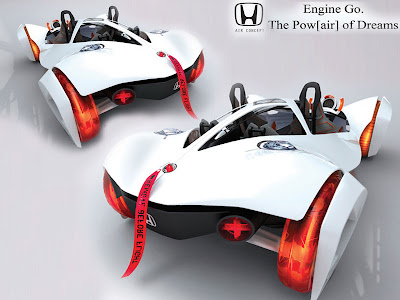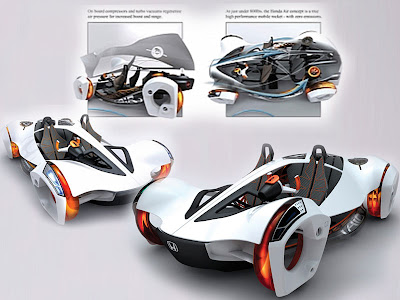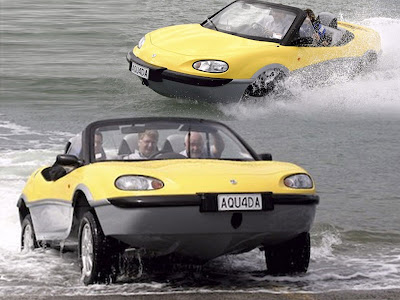Gibbs aquada Sports Cars Concept Real Amphibious Car
Amphibious cars are not just the dreams of moviemakers, although an amphibious car was featured in the movie Pontiac Moon. The
concept Gibbs aquada Sports Cars, now a very real version of an amphibious car has been released in the UK. The
Gibbs aquada high-speed amphibian (HSA) is capable of speeds up to 100mph (160kmh) on land and 30mph (48kmh) over water, taking just six seconds to transform from road going
sportscar to a jet powered marine vessel.
The Aquada, developed by Alan Gibbs, and marketed by Gibbs Technologies, represents state of the art amphibious car design. Since 1968, numerous prototype amphibious cars have been made, but none gained market traction. Advances in technology in numerous fields have helped Alan Gibbs' Aquada become perhaps the most commercially viable amphibious car since the Amphicar.
Gibbs aquada Sports Cars Concept Real Amphibious Car
Gibbs is marketing the Aquada as the
'ultimate leisure vehicle,” and it might be just that. It's as fast as a conventional car on macadam and it can pull a skier on water. The
Gibbs aquada Sports Cars Concept Real Amphibious Car is sleek, and jet-propelled, recalling the Stalwart, but boasting 60 new patents for its design. Computer systems retract the Aquada's wheels in the water, eliminating their drag.
The Gibbs aquada Sports Cars Concept Real Amphibious Car is powered by a 175hp, V6 engine with 4 speed automatic transmission that's linked to the fully-enclosed jet propulsion system when on the water. Getting into the water is as simple as driving down a boatramp or entering directly from shore and once the push-button transformation has taken place, the accelerator becomes the throttle and the jet propulsion takes over.
Gibbs aquada Sports Cars Concept Real Amphibious Car
The Gibbs aquada Sports Cars Concept Real Amphibious Car is designed to meet European road and marine safety standards and is
fully-legal for both water and land use in the UK according to the Gibbs Technologies site. To meet its lofty speed goals, the Aquada uses a carefully shaped outer body supported inside by a metal space frame. In this is conceptually similar to integrating a NASCAR racer's rollcage into a load-distributing unibody structure as used in a typical sedan.
Propulsion in the ten Aquada prototypes currently testing in Michigan is from a 2.5-liter 160-horsepower engine. Gibb's press materials are careful not to specify precisely which engine this may be, but we assume a turbocharged four cylinder would provide the necessary combination of power and weight (a 175-horsepower V6 is used in the euro-spec Aquada).
Gibbs aquada Sports Cars Concept Real Amphibious Car
A take-off from the transmission powers a carefully designed water jet for marine propulsion; Gibbs says the compact jet produces nearly a ton of thrust at half the size and a quarter of the expected weight. It's enough for the Aquada to have set a 32.8 mph record speed run, and sufficiently reliable for Sir Richard Branson to break the amphibian speed record across the English Channel by four hours. More prosaically, Gibbs demonstration video shows the
Aquada pulling a water skier.
While we have not piloted an Aquada, it's clear that its driver-center, three-across seating, no doors and Bimini top will have practical considerations, or at least provide numerous conversation starters. On land we'd assume the Aquada would deliver more than acceptable road handling and middling performance given the moderate power and 3,225 lbs. weight.
Gibbs aquada Sports Cars Concept Real Amphibious Car
"Our plans for North America are ambitious, aggressive and achievable," Gibbs has said, stating, "Aquada could generate annual sales volumes of 100,000 or more within five years." Perhaps we should get our driving gloves and water skis ready now.





























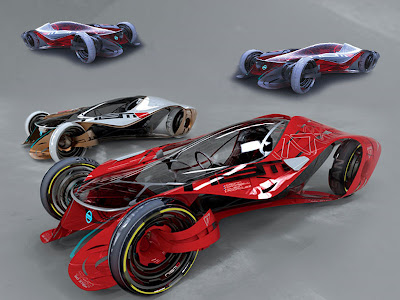


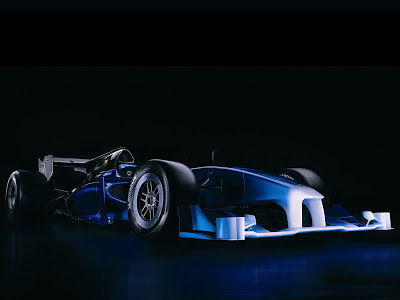



 2011 Lotus Sport Cars T125
2011 Lotus Sport Cars T125

